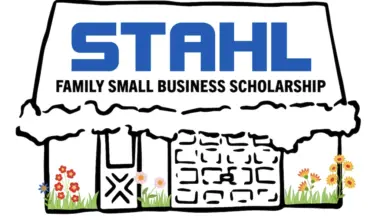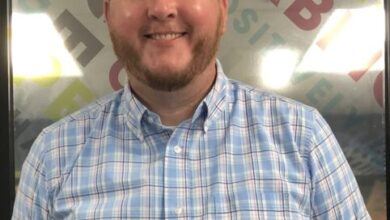Plastics, metal, wood, ceramic and glass can all be embellished with pad printing equipment. And pad printing has been around for at least 75 years, so you’re probably already familiar with it.
The equipment can be inexpensive, from a few hundred dollars, to tens of thousands – just like the other big analog technology, screen printing.
Because of this broad range of equipment prices, pad printing has wide appeal to a lot of businesses. But digital is coming for a reason. A digital UV printer can print on all the same substrates. It requires about 1/10th the setup time and there’s virtually no supply costs (the ink is so inexpensive). As for speed…see the example below.
While they each have advantages, there are some really common applications that put digital UV printing on the equipment “wants” list for many businesses doing pad printing now.
Advantages of Pad Printing
- Inexpensive equipment entry price point
- Versatility to print on a lot of items and substrates
- Relatively short learning curve
- Low cost per unit to print on large runs
- Mature, proven process
Shortcomings of Pad Printing
- Multi-color printing requires more expensive equipment, the more colors needed, the more expensive the equipment
- Full-color images not practical
- Setup costs make short-run production impractical
- Clean up can be messy and time-consuming
- Variable data, designs, colors not practical or impossible
- Color separations needed for multi-color jobs
- Relatively small imprint area – most pad printers only print up to 4″ – 4.5″
- Clearance for item to be printed and the fixture to hold it 6″ or less
- Storage of clichés can become a problem for repeat jobs
Pad printing is still effective for many applications; however, the world has become more and more accustomed to full color, mass-customized items. This means that businesses need to adapt or face a loss of revenue to competitors that are already riding the digital wave.
Flatbed UV Printing
UV flatbed printers offer many of the benefits of traditional pad printing – versatility, a very short learning curve for operation and low ink costs to name a few.
On top of these, UV printing allows for full-color imaging at the same speeds as a pad printed single-color image … or better.
Basically, a 2-inch logo in black takes the exact same amount of time to print as the same image in full color when printed on a UV printer like the Compress iUV-600s or iUV-1200s.
Set up time is shorter, too. Artwork for UV printing does not have to be specially set up to allow for color separations, streamlining the order to production to delivery window. Printing one or thousands requires the same amount of setup because the entire process is digital.
And the print area on a UV printer is huge compared to a pad printer. So, you can save yourself that transition from doing small items with pads and large ones with a silk screen set up.
A UV printer’s print area can be much larger, starting at approximately 24″ x 18″ depending on what model printer you choose. Some specific products even allow for extreme depth of almost 12″ of clearance for the item to be printed – nearly twice the norm for pad printing systems.
Analog vs Digital Pad Printing Example
Here’s a real-world example of personalized golf balls for a company tournament. You may not get requests like this yet in your business but think about how this scenario would play out with the product your pad printing now.
Customizing Golf Balls – Pad Printing
As an example, let’s look at a job for imprinted golf balls. For this illustration, we will use a four-color logo to be printed on each ball and assume that the artwork is ready for separations. Our order will be for 600 balls.
For pad printing, preparing the clichés, exposing and etching them, then mounting the clichés on the machines, then filling and placing the inkcups will easily take an hour or more to accomplish.
So, we are an hour into the process without even having our first print completed.
We also have invested a minimum of $20 into the four clichés (assuming we used photopolymer clichés instead of metal). A few dollars in the films (for exposure), and the expense of labor for one hour ($20/hour will be the number we will use for labor on both processes).
We are $42-plus into the job with nothing printed yet.
Custom Golf Ball Printing Machine | Compress UV Printer from Compress UVPrinter on Vimeo.
Pad Printer Rates of Production Examined
A typical four-color automated pad printer claims to be able to print 600 items per hour. When pad printing, you will need to maintain a minimum amount of ink in your inkcups for the pad printer to perform properly. For most machines, this number is one-third full.
Therefore, for a 90 mm cup, this translates into about 50 grams, which works out to at least .2 liters of ink between the four inkcups on a four-color machine (it’s a little more because you need to maintain at least 50 grams per cup for performance).
For argument’s sake, we will just use the .2 liters as the amount of ink needed for the machine to operate properly.
Pad printing inks range from about $90-$175 per liter. Again, let’s settle for low-middle and call it $120 a liter = $24 in ink to be used for the job.
So, we are at one hour of prep time and $42 for consumables and labor to set up, add another $20 for labor to print and $24 in ink.
When all is said and done, it takes two hours start to finish and $86 in consumables and labor to print 600 four-color golf balls.
Customizing Golf Balls – Flatbed UV Printing
So, why is UV a better solution? Artwork is artwork – so there is no difference between the processes (though artwork for separations does take longer).
The print time for a full bed of golf balls, at quality production mode (1440 x 720 dpi, bidirectional printing at three passes) is 8:20. That’s for 108 golf balls. (Using a Compress UV printer as the production machine.)
Just being conservative with our estimate we can print six full sets of golf balls per hour at this rate or 648 golf balls per hour. More output than pad printing. And all this is done at a much better cost per ink. We end up with an ink cost per golf ball of $.0011 or 66 cents for all 600 golf balls.
Summing It All Up
Pad Printing
$46 in consumables, $40 labor, 2 hours to complete (not including cleanup)
$86 at two hours to complete
UV Printing (Compress iUV-600S)
66 cents in consumables (ink), $20 labor, one hour to complete
Less than $21 at one hour to complete.
That’s better than 1/4 the costs of ink, and 1/2 the time as pad printing.
And Here’s the Kicker
The golf balls printed for this comparison all had different names and department names on them.
That’s right – it was a variable data job! Which made no difference at all with UV, but would have required a lot more setup and print time than pad printing.




